Synthetic secoisolariciresinol diglucoside (LGM2605) inhibits Libby amphibole fiber-induced acute inflammation in mice
- PMID: 31022494
- PMCID: PMC6582645
- DOI: 10.1016/j.taap.2019.04.018
Synthetic secoisolariciresinol diglucoside (LGM2605) inhibits Libby amphibole fiber-induced acute inflammation in mice
Abstract
Background: Exposure to the Libby amphibole (LA) asbestos-like fibers found in Libby, Montana, is associated with inflammatory responses in mice and humans, and an increased risk of developing mesothelioma, asbestosis, pleural disease, and systemic autoimmune disease. Flaxseed-derived secoisolariciresinol diglucoside (SDG) has anti-inflammatory, anti-fibrotic, and antioxidant properties. We have previously identified potent protective properties of SDG against crocidolite asbestos exposure modeled in mice. The current studies aimed to extend those findings by evaluating the immunomodulatory effects of synthetic SDG (LGM2605) on LA-exposed mice.
Methods: Male and female C57BL/6 mice were given LGM2605 via gavage initiated 3 days prior to and continued for 3 days after a single intraperitoneal dose of LA fibers (200 μg) and evaluated on day 3 for inflammatory cell influx in the peritoneal cavity using flow cytometry.
Results: LA exposure induced a significant increase (p < 0.0001) in spleen weight and peritoneal influx of white blood cells, all of which were reduced with LGM2605 with similar trends among males and females. Levels of peritoneal PMN cells were significantly (p < 0.0001) elevated post LA exposure, and were significantly (p < 0.0001) blunted by LGM2605. Importantly, LGM2605 significantly ameliorated the LA-induced mobilization of peritoneal B1a B cells.
Conclusions: LGM2605 reduced LA-induced acute inflammation and WBC trafficking supporting its possible use in mitigating downstream LA fiber-associated diseases.
Summary: Following acute exposure to Libby amphibole (LA) asbestos-like fibers, synthetic SDG (LGM2605), a small synthetic molecule, significantly reduced the LA-induced increase in spleen weight and peritoneal inflammation in C57BL/6 male and female mice. Our findings highlight that LGM2605 has immunomodulatory properties and may, thus, likely be a chemopreventive agent for LA-induced diseases.
Keywords: Asbestos; Autoimmunity; Inflammation; LGM2605; Libby amphibole; Secoisolariciresinol diglucoside.
Copyright © 2019 Elsevier Inc. All rights reserved.
Conflict of interest statement
CONFLICTS OF INTEREST
Melpo Christofidou-Solomidou (MCS) reports grants from the NIH and NASA during the conduct of the study. In addition, MCS has patents No. PCT/US2015/033501, No. PCT/US2016/049780, No. PCT/US17/35960, No. PCT/US2014/041636, and No. PCT/US15/22501 pending and has a founders equity position in LignaMed, LLC. MCS, RAP, KP, and SMA report grants from the National Institutes of Health (NIH) during the conduct of the study. KMS, DEK, and JCP have nothing to disclose.
Figures

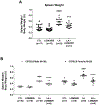
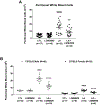
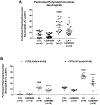

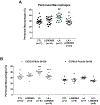

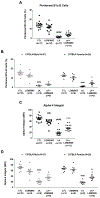

References
-
- Larson TC, Lewin M, Gottschall EB, Antao VC, Kapil V, Rose CS, Associations between radiographic findings and spirometry in a community exposed to Libby amphibole, Occup Environ Med, 69 (2012) 361–366. - PubMed
-
- Whitehouse AC, Black CB, Heppe MS, Ruckdeschel J, Levin SM, Environmental exposure to Libby Asbestos and mesotheliomas, Am J Ind Med, 51 (2008) 877–880. - PubMed
-
- Szeinuk J, Noonan CW, Henschke CI, Pfau J, Black B, Miller A, Yankelevitz DF, Liang M, Liu Y, Yip R, Linker L, McNew T, Flores RM, Pulmonary abnormalities as a result of exposure to Libby amphibole during childhood and adolescence-The Pre-Adult Latency Study (PALS), Am J Ind Med, 60 (2017) 20–34. - PubMed
Publication types
MeSH terms
Substances
Grants and funding
LinkOut - more resources
Full Text Sources

